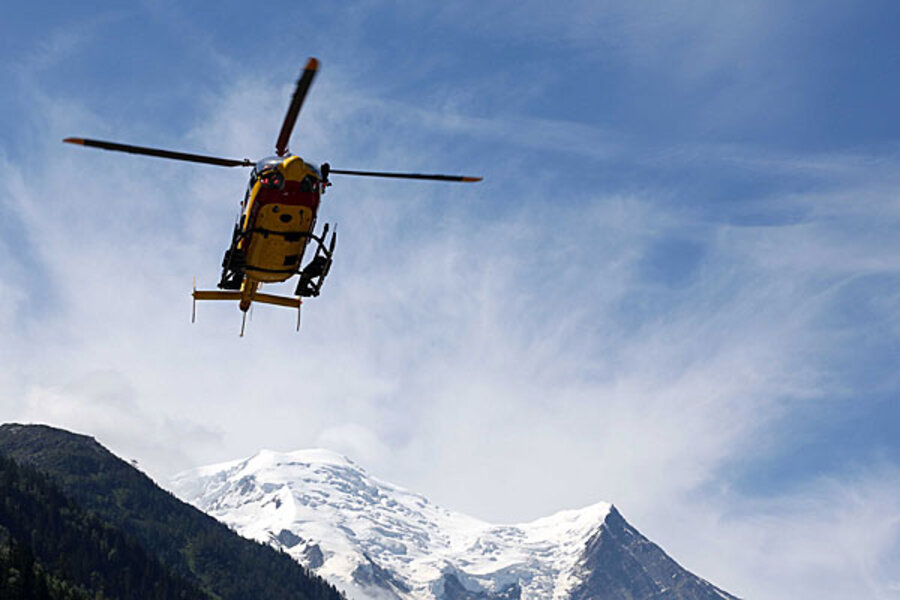Avalanche in French Alps leaves at least nine dead, several missing
Loading...
| Paris
An avalanche Thursday in the French Alps swept nine European climbers to their deaths on a slope leading to Mont Blanc, left at least nine others injured and several climbers unaccounted for, authorities said. Two climbers were rescued and emergency crews were searching for the missing.
A group of 28 climbers from Switzerland, Germany, Spain, France, Denmark and Serbia were believed to be in the expedition caught in the avalanche that was 4,000 meters (13,1000 feet) high on the north face of Mont Maudit, part of the Mont Blanc range.
Some climbers managed to turn back in time, the regional authorities in Haute-Savoie said.
RECOMMENDED: Nine everyday heroes
There was conflicting information about the dead. Two Spaniards, one German and one Swiss climber were among the dead, the Haute-Savoie prefecture said. News reports said three British climbers were among the dead.
The nine injured were hospitalized in Sallanches and up to four others remain missing, the prefecture said.
The gendarme service in Chamonix says they were alerted around 5:25 a.m. (0325GMT) Thursday to the avalanche. A block of ice 40-centimeters (15.75-inches) thick broke off and slid down the slope, creating a 2-meter (6-foot)-thick, 50-meter (160-foot)-long mass of snow, the prefecture said.
Several dozen gendarmes and other rescuers using helicopters and dogs worked to pull the dead and injured from the mountain and search for the missing. The risk of a new avalanche complicated the search.
It appears that early summer storms left behind heavy snows that combined with high winds to form dangerous avalanche conditions on some of the popular routes around Mont Blanc.
According to tweets from climbers in the region, recent winds led to wind-slab forming on the slope. Five days ago, they tweeted that the French mountain town of Chamonix saw a monsoon-like downpour that turned to snow at 3,000 meters (9,850 feet) high.
French Interior Minister Manuel Valls was traveling to the site later Thursday.
A Spanish Foreign Ministry spokeswoman confirmed that two of the dead were Spanish but said it was unclear if there were Spaniards among the missing. She could give no details on the identities of the two victims.
The Danish Foreign Ministry says two Danes were involved in the avalanche, though it was unclear whether they were among the dead and injured.
Some of the climbers were with professional guides, others were independents. French investigators will examine the circumstances of the deaths.
RECOMMENDED: Nine everyday heroes
___
John Heilprin in Geneva, Jan Olsen in Copenhagen, and Ciaran Giles in Madrid contributed to this report.
Copyright 2012 The Associated Press.







